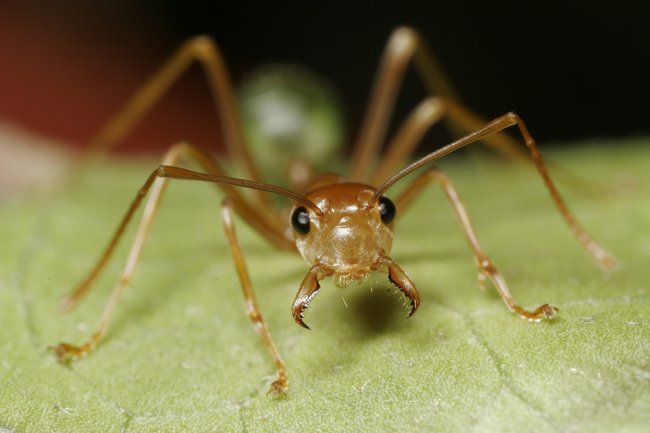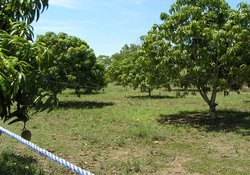As the global population rises and finite resources dwindle, farmers need new, more sustainable ways to control pests. Ecologists have now found a safe, sustainable and cost-effective new pest control. But rather than a high-tech new compound or genetic technology, it’s a tiny, low-tech organism: the ant.

Published 31 August in the British Ecological Society’s Journal of Applied Ecology, a review of more than 70 scientific studies provides evidence that on many crops from cocoa and citrus to palm oil and cedar, ants can control pests as efficiently – and more cheaply – than chemicals.
The review was conducted by Aarhus University’s Dr Joachim Offenberg, an ecologist who has studied ants for almost 20 years. It includes studies of more than 50 pest species on nine crops across eight countries in Africa, South-East Asia and Australia.
Higher yields and better quality
Most of the studies in Offenberg’s review are on weaver ants (Oecophylla), a tropical species which lives in trees and weaves ball-shaped nests from leaves. Because weaver ants live in their host trees’ canopy, near the flowers and fruit that need protection from pests, they are good pest controllers in tropical orchards.
All farmers need to do is collect ant nests from the wild, hang them in plastic bags among their tree crops and feed them a sugar solution while they build their new nests. Once a colony is established, farmers then connect the trees that are part of the colony with aerial ‘ant walkways’ made from string or lianas.
After that, the ants need little, except for some water in the dry season (which can be provided by hanging old plastic bottles among the trees), pruning trees that belong to different colonies so that the ants do not fight, and avoiding insecticide sprays.
The review shows that crops such as cashew and mango can be exceptionally well protected from pests by weaver ants.
One three-year study in Australia recorded cashew yields 49% higher in plots patrolled by ants compared with those protected by chemicals. Nut quality was higher too, so net income was 71% higher with ants than with chemicals.
Similar studies in Australian mango crops found that ants could produce the same yield as chemical control, but because the ants were cheaper, and fruit quality better, net income from mangoes produced with ant protection was 73% higher.
“Although these are rare cases where the ants were superior to chemicals, many studies show that ants are just as efficient as chemical controls. And of course ant technology is much cheaper than chemical pest control,” Offenberg says.
While ants are not a panacea for pest control, he believes that with more information and training for farmers, ants could be much more widely used in temperate as well as tropical agriculture and forestry.
“Weaver ants need a canopy for their nests, so they are limited to plantations and forestry in the tropics. But ground-living ants can be used in annual crops such as maize and sugar cane. European wood ants are renowned for controlling pests in forestry, and new projects are trying to use wood ants to control winter moths in apple orchards. Ants could even be used to fight plant pathogens because they produce antibiotics to combat diseases in their dense societies,” he explains.

Ants are superorganisms
Ants live on every continent except Antarctica and are the world’s most successful group of terrestrial animals. Although tiny in size compared with humans, their numbers are vast; some estimates suggest the mass of all ants on Earth is greater than that of humans.
Ants feed on other insects, and most ant species nest in soil, although some tropical species nest in trees and bushes. But it is their ecology that makes ants such good pest controllers.
According to Offenberg, “Ants are great hunters and they work cooperatively. When an ant finds its prey, it uses pheromones to summon help from other ants in the nest. By working together, they can subdue even large pests.”
Ants are organised as superorganisms. This means that the ant colony is the organism rather than the individual ants, and the cells – or ants – in the superorganism can move in many directions at the same time. As the colony can weigh several kilograms in total, ants are simultaneously small and large animals, making them ideal for doing lots of small tasks like removing small pests from crops.
This article is featured in RØMER, Aarhus University’s science and technology newsletter.